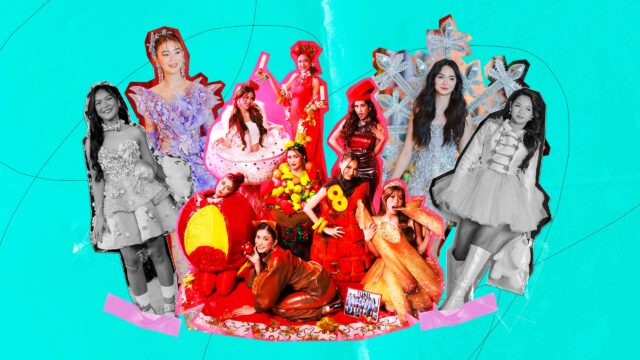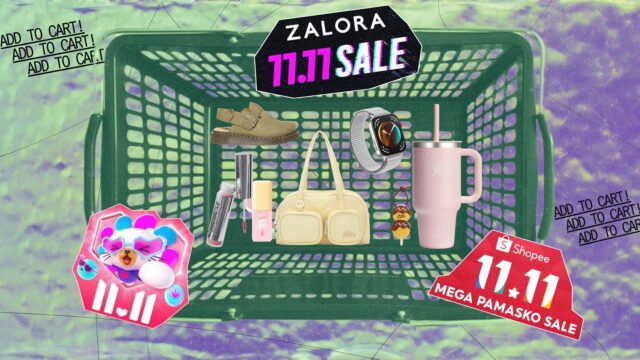You might have seen his creations or perhaps bought some of his reworked garments, but now it’s time to learn about the founder of Vintage Junkie Manila and Karma Collective.
Related: This Gen Z Filipino Fashion Designer Is Behind The Structured Silhouettes You See On The Runway
In an era marked by environmental concerns, Erik Saguiped’s reworked and repurposed clothing contributes to the slow fashion movement. Through upcycling pieces, he not only minimizes the environmental footprint associated with new production but also fosters a deeper connection between people and their clothing.
Each reworked item tells a story—a narrative reimagined by the touch of this 34-year-old. From vintage items to recycled garments, it’s no wonder why these unique collections are going viral on social media. You might have seen his creations or perhaps bought some of his thrifted clothes. It’s now the moment to gain insight into the amazing artist behind Vintage Junkie Manila and Karma Collective.


Introduce yourself.
My name is Erv, founder of both The Vintage Junkie Manila and Karma Collective Manila—also a hoarder and a thrifter since 2004.
Could you share the story behind The Vintage Junkie Manila and Karma Collective Manila? What inspired you to begin reworking and repurposing clothing?
I started working and playing with garments back in 2016. Aligned with my favorite hobby, which is thrifting, I began acquiring pieces with significant potential in terms of silhouette and design. My interest grew in expressing my personal touch and style through the pieces I recreated. At that time, “reworked and repurposed” wasn’t as prevalent, and those terms were not commonly used compared to today. Vintage Junkie Manila, launched back in 2017, was created to showcase the items I thrifted and make them available for purchase. What motivated me to continue with Karma Collective Manila is the observation of wastage in thrift shops and rag houses.


How do you approach the creative process of reworking vintage pieces? Are there specific elements or themes that inspire your designs?
Karma Collective’s vision regarding garments involves experimenting with various shapes, silhouettes, and fabrics. I began by creating hand-made patches that are manually embroidered. The intention was to give each garment an imperfect yet well-made appearance in terms of patterns.
Sustainability is a key aspect of repurposing clothing. How do you incorporate sustainable practices into your work?
In my years of operation, achieving 100% sustainability is an ambitious goal. However, understanding where to start and what to incorporate is crucial. I always emphasize consuming less. For Vintage Junkie Manila, I prefer curating pieces that resonate best with my audience while ensuring quality over quantity. The concept is not about buying extensively but buying thoughtfully, acquiring just enough. If a certain piece from your closet or collection no longer brings joy, consider selling it or repurposing it for a Karma piece or another reworked project.
For my reworked projects, I solely use thrifted or discarded fabrics, often destroyed or items that hold no value for anyone else.
In the case of Karma, I maintain a limited production. I restrict the number of pieces I create each month, often just one or two.
Could you share a particularly challenging or rewarding project you’ve worked on and the lessons it taught you about your craft?
Instead of highlighting individual pieces, I prefer to emphasize the production aspect behind them. As I didn’t receive formal training in fashion, working on specific projects offers me the chance to delve into understanding fabrics, how each complements various designs, and the intricacies of fitting for different body types. It’s both challenging and rewarding, particularly when I achieve my desired outcome after multiple attempts.


Which influences or eras inspire your reworked clothing designs, and how do you infuse your own creative touch into each piece?
I was born in the 90s, so I draw inspiration from the things and scenes I grew up with during my younger years, particularly from the mid-90s to the early 2000s. Regarding design, I’m typically drawn to Japanese-inspired silhouettes and both classic and streetwear fits.
The Vintage Junkie Manila and Karma Collective have gained popularity. How do you balance maintaining the brands’ unique identities with meeting the demands of a growing audience?
When I initially launched both The Vintage Junkie Manila, it began as a page focused on buying and selling vintage pieces and garments that I liked. Meanwhile, for Karma Collective, I used that page as a space to showcase projects I created; it served as a creative outlet for me whenever I felt burned out from selling shirts and other garments.
However, after three years, I gradually transitioned Karma Collective into a more personal page. I rebranded the Vintage Junkie Manila page to showcase my thrifting journey, appreciation for various pieces, participation in events, management of our physical store, and to exhibit our creative endeavors like Karma.
Although I continue to periodically post bulk items for sale and curate specific collections to encourage people to find pieces that resonate with them, The Vintage Junkie Manila primarily serves as a platform for our creative and entrepreneurial journey.
Collaboration often plays a significant role in the creative industry. Have there been any memorable collaborations that stand out in your journey so far?
I believe that collaborating with the right people can pave the way for mutual success. In 2018, I attempted to launch a small pop-up and collaborated with one of my co-sellers, hosting a small event in Manila. Through this endeavor, I connected with numerous individuals who shared similar visions, eventually leading me to the Season Pass community. Now, TVJM/Karma shares space with Season Pass in Quezon City, alongside my other partners (Give Me The Loot & Vist MNL).


What advice would you give to individuals aiming to start their own creative ventures, especially in the field of reworking and repurposing fashion?
Go ahead, create. Just start. Discover more about yourself as you begin creating. Be mindful of what you use for your re-creations. The primary concept of repurposing items is to recycle, not to destroy new items and label them as repurposed or reworked.
Starting to create doesn’t guarantee that you’ll love the outcome on your first attempt, and that’s absolutely fine. It’s all part of the journey. Learn from your previous projects; the only person you need to satisfy with your work is yourself. That’s what matters most; everything else is simply a bonus. Enjoy the process!
Social media appears to play a significant role in promoting creative businesses. How do you leverage platforms like Instagram to showcase your work and engage with your audience?
Social media played a vital role in the launch of The Vintage Junkie Manila. It served as a platform to showcase our taste and interests through our curation and process. For Karma, it connected me to the right audience, allowing me to engage with fellow creatives, share experiences, and exchange learnings.
What aspirations and goals do you have for The Vintage Junkie Manila and Karma Collective?
We are turning 6 next month, and a lot has changed. However, our vision has remained the same: to share our love for vintage, whether it’s garments or display pieces, and to assist people in selling and collecting pieces they love. Presently, we are expanding into other vintage items, such as furniture, art pieces, and various knick-knacks. Our goal is likely to establish our own studio, serving as a workshop for Karma and a showroom for TVJM pieces. Additionally, we aim to collaborate more with the right people and fellow creatives to produce work that benefits the entire community!
Continue Reading: I’m a Marketing Major, Now What? We Ask This Gen Z Marketing Agency Founder for Advice





